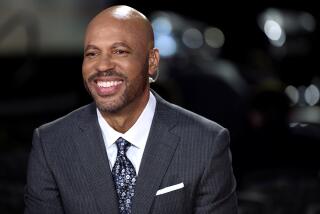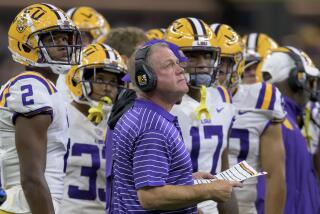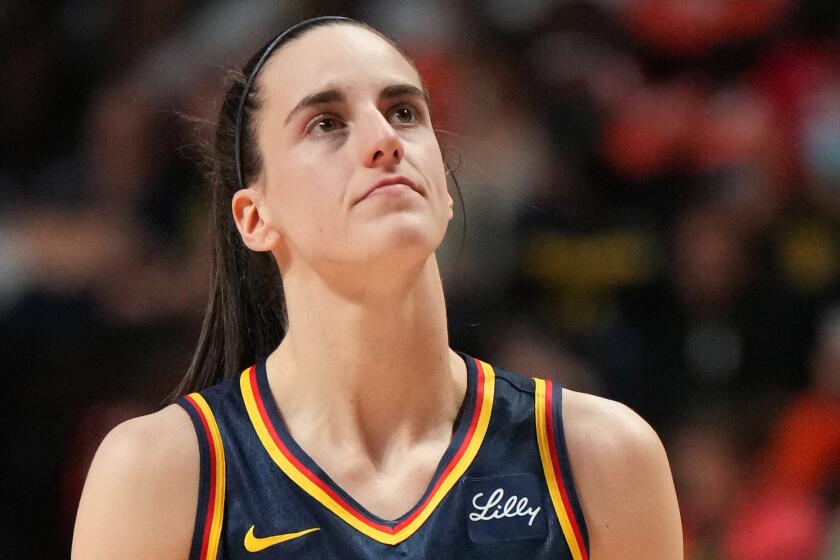When talking NFL labor negotiations, a primer comes in handy
Look who’s talking.
The NFL and its players are back at the negotiating table, and that has to be a good thing, right?
After all, the two sides have had stretches when they were barely speaking, so it was a positive sign when last week they agreed to sit down with a federal mediator to discuss their differences. They participated Monday in a fourth day of talks, with the March 3 deadline of the current labor deal fast approaching, and they stuck to the rules and didn’t publicly talk about what’s happening in that room.
But what does it all mean? Are they any closer to a resolution, or is it going to take more than a mediator to persuade them to find a solution?
A primer:
What is mediation?
With the help of a neutral third party — in this case George H. Cohen, director of the Federal Mediation and Conciliation Service — the NFL and the NFL Players Assn. are getting a chance to sit in the same room and state their cases.
It’s likely that Cohen is meeting separately with each side, giving both the owners and players his opinion on the strengths and weaknesses of their arguments, and perhaps suggesting where they might want to consider budging. The talks are nonbinding, and either side can pull out at any time.
What’s another benefit of mediation?
The pressure is high for NFL Commissioner Roger Goodell and NFLPA Executive Director DeMaurice Smith to not give an inch. Having a neutral mediator point out the flaws in each party’s position allows Goodell and Smith to educate the people they work for without looking weak themselves.
Do these types of disagreements get worked out this way?
Sometimes. Just last year, Cohen helped Major League Soccer and its players’ union come to an agreement and avoid a work stoppage.
Is it likely the same thing will happen with the NFL?
No. While there’s always a chance the sides could strike a deal, it’s more likely this is all cosmetic. No matter where they go from here, each side needs to show it negotiated in good faith and made its best effort to reach an agreement. What better way to do that than say, “We locked ourselves in a room with these guys for a week and still couldn’t work things out.”
Short of doing a deal, what recourse do the players have to avoid a lockout?
The union could decertify — or no longer act as a union — meaning there would no longer be a legal collective bargaining unit for the players. Suddenly, teams would no longer be within the labor exemption to the antitrust laws.
In that case, owners could not collectively lock out the players. That would be a form of collusion called a collective boycott, and it would expose the owners to individual and class-action lawsuits by the players. That could be extremely costly considering the real economic damages in antitrust suits are tripled.
What would the owners do if the union decertified?
They would argue the move was a “sham” decertification, saying the players didn’t really decertify. You’re not allowed to decertify simply to gain leverage at the negotiating table — particularly if you’re still at that table acting like a union.
It would be up to the courts to decide.
If the March 3 deadline passes and there is no deal, does that mean a lockout is coming?
Probably, but there are other options. The owners also could claim to the National Labor Relations Board that they: a) bargained in good faith, and b) have reached an impasse. A mediation such as this would help bolster those claims.
If they successfully make their case, the owners under labor law could impose whatever their final contract offer was. Those would become the new work rules, and the pressure would be on the players to decide how to proceed.
twitter.com/LATimesfarmer
More to Read
Go beyond the scoreboard
Get the latest on L.A.'s teams in the daily Sports Report newsletter.
You may occasionally receive promotional content from the Los Angeles Times.











